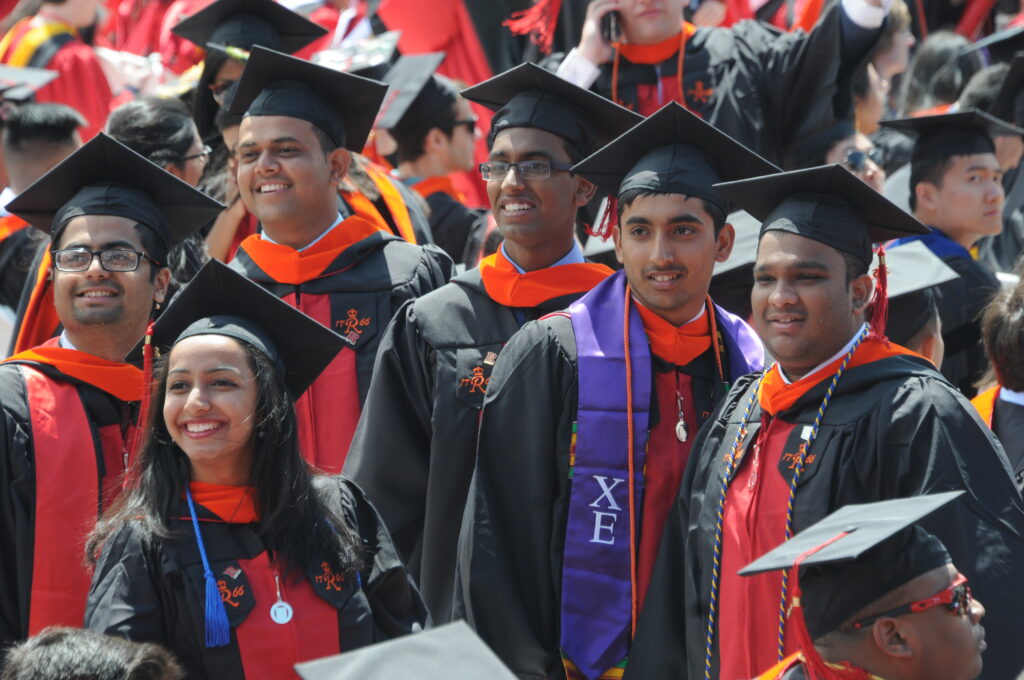
Because access to higher education has been a means of breaking self-perpetuating cycles of poverty, and enabling those without the same advantages to fulfill their potential, affirmative action has been an excellent tool – in the absence of actual reparations – to redress the systemic barriers. The extremist ChristoFascist Supreme Court supermajority has ended affirmative action, calling it “unconstitutional” discrimination. It is part of a crusade to undo 50 years of policies aimed at promoting diversity, inclusion and equality.
Here is a Fact Sheet from the White House on actions President Biden is taking to promote educational opportunity and diversity in colleges and universities: –Karen Rubin/news-photos-features.com
Today, the Supreme Court upended decades of precedent that enabled America’s colleges and universities to build vibrant diverse environments where students are prepared to lead and learn from one another. Although the Court’s decision threatens to move the country backwards, the Biden-Harris Administration will fight to preserve the hard-earned progress we have made to advance racial equity and civil rights and expand educational opportunity for all Americans.
As our nation’s colleges and universities consider their admissions processes in the wake of the Court’s decision, President Biden is calling on them to seize the opportunity to expand access to educational opportunity for all. Our nation is stronger when our colleges and universities reflect the vast and rich diversity of our people. But while talent, creativity, and hard work are everywhere across this country, equal opportunity is not.
Specifically, the President is calling on colleges and universities, when selecting among qualified applicants, to give serious consideration to the adversities students have overcome, including:
- the financial means of a student or their family;
- where a student grew up and went to high school; and
- personal experiences of hardship or discrimination, including racial discrimination, that a student may have faced.
In doing so, colleges and universities can fully value aspiring students who demonstrate resilience and determination in the face of deep challenges.
The Biden-Harris Administration is taking swift action to support our Nation’s colleges and universities so they can continue building pathways to upward mobility and success for all students to thrive in the American workforce and our Nation’s military. Specifically, the Biden-Harris Administration is:
- Providing colleges and universities with clarity on what admissions practices and additional programs to support students remain lawful. The Department of Education and Department of Justice will provide resources to colleges and universities addressing lawful admissions practices within the next 45 days, as colleges prepare for the next application cycle. The Department of Education will also provide assistance to colleges and universities in administering programs to support students from underserved communities.
- Convening a National Summit on Educational Opportunity. The Department of Education will host a national summit on equal opportunity in postsecondary education next month with advocates, student leaders, college and university administrators, researchers, and state, local, and Tribal leaders to share lessons learned, innovative strategies, and develop additional resources for colleges and students to expand access to educational opportunity.
- Releasing a report on strategies for increasing diversity and educational opportunity, including meaningful consideration of adversity. Following the Summit, the Department of Education will produce a report by this September, elevating promising admissions practices to build inclusive, diverse student bodies, including by using measures of adversity. The report will address topics including the impact of current admissions practices that may negatively affect the admissions chances of students from underserved communities; strategies to integrate measures of adversity in admissions; outreach and recruitment programs to create diverse applicant pools; strategies for retention and degree completion; and financial and other support programs to make college attainable.
- Increasing transparency in college admissions and enrollment practices. The Administration is committed to providing transparent data with respect to admissions and enrollment. The Department of Education’s National Center for Educational Statistics will consider ways to collect and publish more information related to college application and enrollment trends. This includes ways that information might be validly disaggregated by race and ethnicity, first-generation status, legacy status, and other measures. Information in these areas could help higher education leaders, academics and the general public address potential barriers to college recruitment, admissions, and enrollment.
- Supporting states in analyzing data to increase access to educational opportunity for underserved communities. The Department of Education will assist states and Tribal nations in marshaling their data to improve college recruitment, admissions, and financial aid practices to devise strategies for increasing access to educational opportunity, such as partnerships to appropriately share and use education data, and direct admissions programs that proactively admit students based on factors such as academic performance and students’ geographic location – without requiring them to apply or pay an application fee.
This work builds upon the Biden-Harris Administration’s historic efforts to ensure all students have the opportunity to access higher education by:
- Securing a historic increase in the Pell Grants: The President championed the largest increase to Pell Grants in the last decade – a combined increase of $900 to the maximum award over the past two years to benefit low – and middle-income students.
- Prioritizing college completion: The Biden-Harris Administration has championed efforts to improve postsecondary outcomes, particularly for students who face the greatest barriers to accessing and completing college. In response to the President Biden’s budget, Congress established a new Postsecondary Student Success Grant program to provide direct support to institutions to engage in evidence-based activities that support college re-enrollment, retention, and completion among individuals who are close to graduation.
- Supporting America’s Minority-Serving Institutions: President Biden has secured historic investments in institutions that enroll and graduate disproportionate shares of low-income students and students of color, including tens of billions of dollars in funding for Historically Black Colleges and Universities, Tribal Colleges and Universities, and Minority Serving Institutions, including Hispanic Serving Institutions through the Department of Education.
- Fixing the broken student loan system: The Biden-Harris Administration has taken action to make the student loan system more manageable for current and future borrowers and reduce the burden of student debt, including by:
- Cutting monthly payments in half for undergraduate loans. The Department of Education is proposing an income-driven repayment plan that protects more low-income borrowers from making any payments and caps monthly payments for undergraduate loans at 5% of a borrower’s discretionary income – half of the rate that borrowers must pay now under existing plans. The average annual student loan payment will be lowered by more than $1,000 for both current and future student borrowers who owe payments.
- Fixing the broken Public Service Loan Forgiveness (PSLF) program by ensuring that borrowers who have worked at a qualifying nonprofit organization, in the military, or in federal, state, Tribal, or local government, receive appropriate credit towards loan forgiveness. These regulatory changes build on temporary changes the Department of Education made to PSLF, under which roughly 616,000 public servants received more than $42 billion in loan forgiveness.
- Ensuring targeted student loan forgiveness programs work. Including its reforms to PSLF, the Department of Education has approved a total of more than $66 billion in relief to over 2.2 million student loan borrowers, including many who were defrauded by their college, enrolled in a college that abruptly closed, or are permanently disabled and unable to work.
Vice President Harris on the Supreme Court’s ruling in Students for Fair Admissions v. Harvard and Students for Fair Admissions v. University of North Carolina
Today’s Supreme Court decision in Students for Fair Admissions v. Harvard and Students for Fair Admissions v. University of North Carolina is a step backward for our nation. It rolls back long-established precedent and will make it more difficult for students from underrepresented backgrounds to have access to opportunities that will help them fulfill their full potential.
It is well established that all students benefit when classrooms and campuses reflect the incredible diversity of our Nation. Colleges and universities provide opportunities for students to interact with Americans from all walks of life and learn from one another. By making our schools less diverse, this ruling will harm the educational experience for all students.
Our Nation’s colleges and universities educate and train the next generation of American leaders. Students who sit in classrooms today will be the leaders of our government, military, private sector, and academic institutions tomorrow. Today’s decision will impact our country for decades to come.
In the wake of this decision, we must work with ever more urgency to make sure that all of our young people have an opportunity to thrive.

